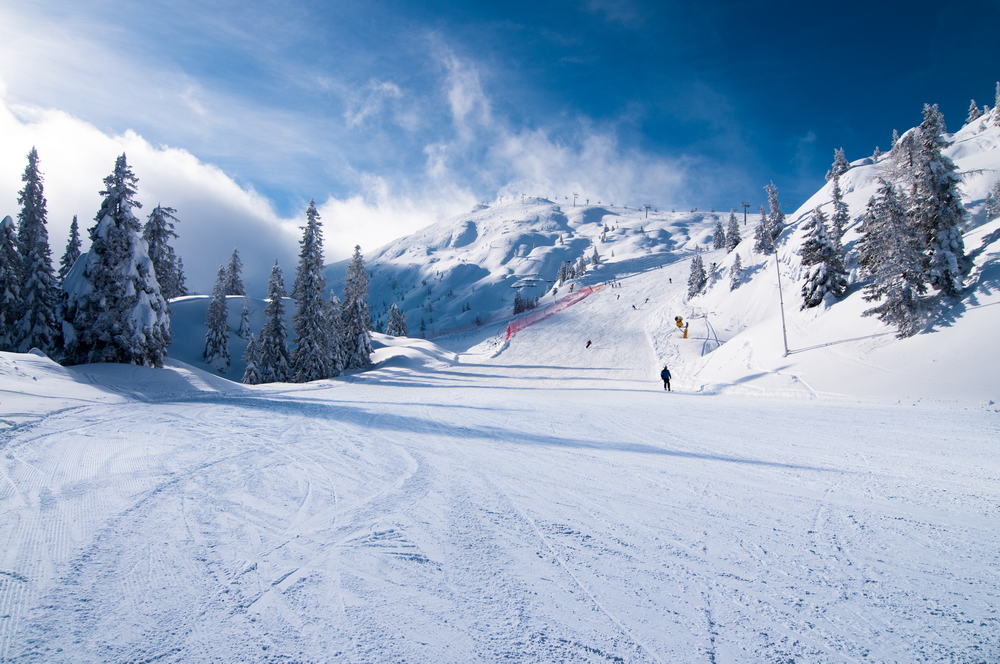Inspecting Your Skis
Before heading out to the slopes, it’s important to thoroughly inspect your skis to ensure they are ready for optimal performance. Examining the edges, bases, topsheets, and bindings can identify issues that may affect how your skis handle terrain and snow conditions.
Edges
The steel edges on the sides of your skis are crucial for gripping the snow and initiating turns. Visually inspect edges for signs of rust and burrs. Feel for any snags by running a gloved hand from tip to tail. Burrs can grab the snow rather than cleanly slice into it, making turning difficult. Use a diamond file to smooth any rough spots.
Bases
The bases of your skis should be smooth, dry, and clean before hitting the slopes. Check for gouges, cracks, or delamination. Fill any nicks and scratches with an appropriate base repair compound. A smooth base allows your ski to glide cleanly over the snow rather than sticking to it. Ensure bases are free of dirt, oil, or wax buildup.
Topsheets
While topsheets don’t directly contact the snow, they can affect performance. Inspect for splintering along the edges that may allow snow to penetrate. Use epoxy to seal any cracks or holes. Also check that edges are still securely fastened to avoid release while carving turns.
Bindings
Make certain bindings are mounted correctly onto your skis and that the release/retention settings match your ability level, height, and weight. Ratcheting bindings onto boots before clicking into skis confirms that they engage and release properly. This avoids being stuck to your skis in a fall.
Tuning and Waxing Your Skis
In addition to inspecting your gear, the experts at Canyon Sports say that ski tunes and waxing optimizes glide for conditions you’ll encounter on the hill.
Base Filing
Use a metal file specially designed for ski bases to remove any oxidation or small scratches from the base. File in the direction the ski travels, tip to tail, keeping the file flat against the base. Avoid filing too aggressively or you may damage the base.
Base Grinding
While filing evens out minor blemishes, deep gouges require base grinding. This uses a rotating disc to grind down the base, leveling scratches or gouges. Match the grind pattern to how you use your skis. This is best left to experienced tuners.
Waxing
Waxing seals and conditions the base for maximum glide. Scrape off old wax first, then iron on a thin, even layer of wax suited to snow conditions. Let the wax cool completely before buffing to an even sheen using a power brush or cork. This preps your base for slick gliding across groomers.
Edge Sharpening
Sharpening tools cut a precise bevel along your steel edges. This initiates clean turns rather than skidding. Set the sharpening guide to match your ski’s angle and ensure even pressure. Over-sharpened edges lose stability. A light pass every few days maintains edge bite. Diamond stones remove burrs or roughness.
P-Tex Filling
If your base has larger holes or deep gouges, you’ll need to fill these with P-Tex, the material used in manufacturing ski bases. Allow the fill to completely cure overnight before filing or grinding flush with the base. This prevents bumps or holes which may disrupt your glide.
Conclusion – Test Your Gear
Once your ski inspection, tunes, and waxing are complete, evaluate your handiwork at the ski hill. Load fully tuned, waxed, and sharpened gear into your vehicle, heading to the resort eager for that first blissful run. Cruising smoothly on a groomed corduroy face, you’ll appreciate your properly prepared skis. Your tuned gear will transform the entire mountain into your playground all winter long.



